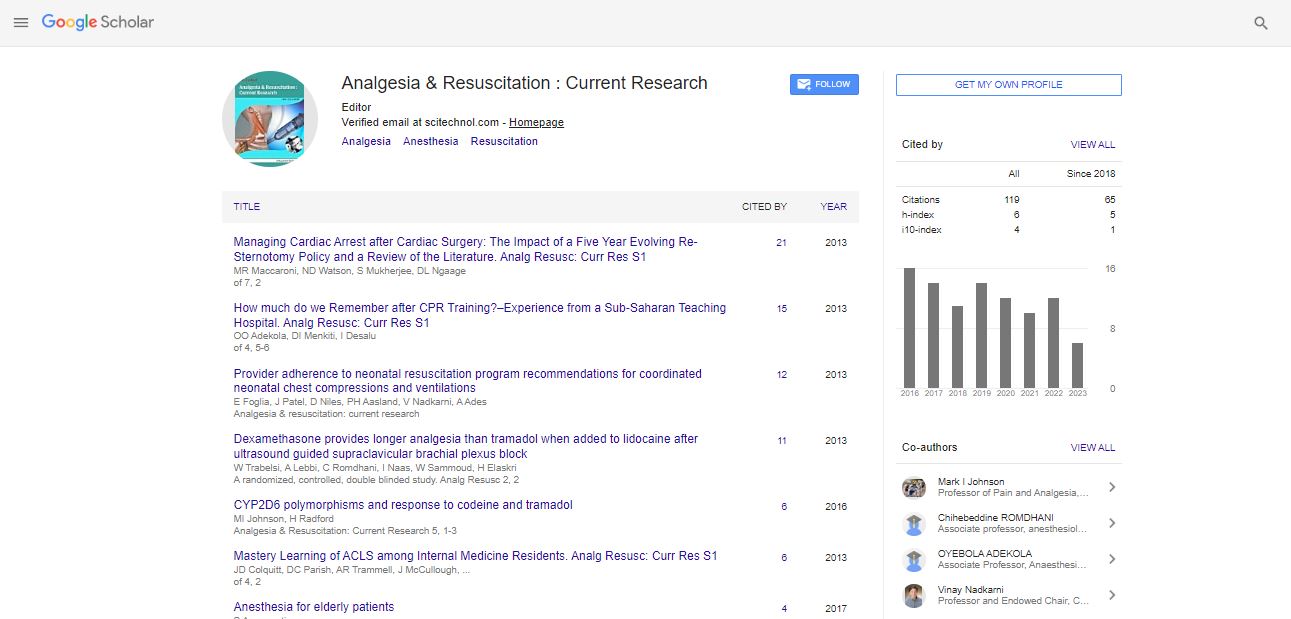A new approach to the treatment of severe pain: A topical liniment made from a California plant
James D Adams
University of Southern California, USA
: Analg Resusc: Curr Res
Abstract
A pain cycle exists in the body that can begin in skin sensory neurons, continues to the spinal cord and the brain, and then returns to the spinal cord and the skin. Analgesia can occur at any of these neurons to break the pain cycle. Upon initiation of the pain cycle in chronic pain, several changes occur including cyclooxygenase 2 induction in the skin. Cyclooxygenase 2 is the major source of PGE2 that enhances pain at transient receptor potential cation channels in the skin. A traditional California plant medicine, made from Artemisia Californica, was found to be an effective treatment of severe and chronic pain including broken bones, cancer pain, back pain, fibromyalgia, diabetic neuropathy and more. The liniment contains mono terpenoids and sesquiterpenes. Transient receptor potential cation channels are the major pain receptors in the skin and can be inhibited by mono terpenes such as camphor, menthol and eucalyptol. These mono terpenes cross the skin and provide pain relief for several hours. Sesquiterpenes can cross the skin and inhibit cyclooxygenase 2. The combination of mono terpenes and sesquiterpenes in the liniment provides several hours of pain relief.
Biography
James D Adams received a PhD degree in Pharmacology from the University of California San Francisco in 1981. He has been a faculty member at the University of Southern California, School of Pharmacy since 1987. He has over 230 publications and has done research on several pain medications. He received training from a California Indian Healer and is an expert on plant medicines. He will discuss his work on a pain liniment made from California sagebrush that is effective even in severe pain such as broken bones. Several hundred patients have used the liniment. He will discuss the chemistry and pharmacology of the liniment and will discuss safety issues of the liniment in comparison to opioids and NSAIDs.
 Spanish
Spanish  Chinese
Chinese  Russian
Russian  German
German  French
French  Japanese
Japanese  Portuguese
Portuguese  Hindi
Hindi 
